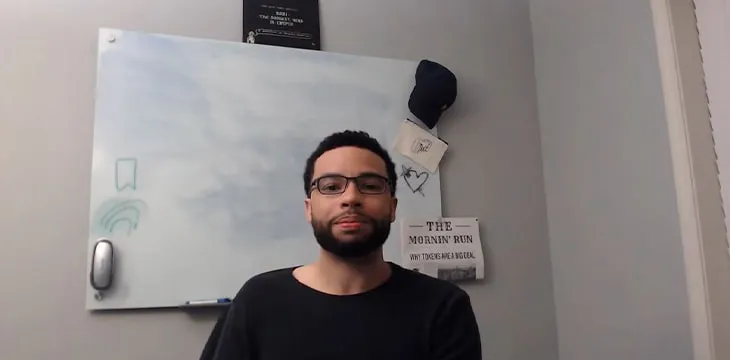|
Getting your Trinity Audio player ready...
|
Joshua Henslee recently released a new video talking about the new record blocked mined by GorillaPool and its implications for Bitcoin mining now and in the future. Watch the video or read the summary below.
On the record-breaking BSV block mined by GorillaPool
Before delving into the content of Henslee’s video in more depth, let’s get some facts out about the block and why it was a record-setter.
- The block was 3.65GB.
- It had over 2.5 million transactions in it.
- The block earned GorillaPool an additional 9.75 BSV coins on top of the 6.25 coin block subsidy.
This has profound consequences for Bitcoin mining in the long term. As Satoshi Nakamoto said, the fees inside blocks will eventually replace the block subsidy, which was always supposed to be a temporary subsidy.
In a few decades when the reward gets too small, the transaction fee will become the main compensation for nodes.
— Parag Agrawal (@paragapp) April 7, 2022
On the impact that big blocks will have on Bitcoin mining
Henslee notes that right now, there are larger blocks in which the fees are greater than the subsidy periodically, but they’re still inconsistent. These blocks do earn miners a few extra coins here and there, but they aren’t regular enough to have a permanent impact on Bitcoin mining yet.
However, this recent record block earned GorillaPool 150% more than it expected to receive. When this begins happening regularly, Henslee believes it will have a more significant and long-lasting impact on mining. He notes that there’s a fixed amount of hash power across all the SHA-256 blockchains, and miners will switch it to mine the most profitable chain. This means that eventually, hash power will leave the BTC and BCH chains and come over to BSV.
Henslee points out that arbitrage never lasts long. When miners figure out what they can earn more for doing the same amount of work, they’ll move across and close that gap. At this point, all the history and controversy surrounding BSV won’t matter. “This is the reason you don’t see $100 bills lying in the street,” Joshua says, using an analogy as to why arbitrage can’t exist for long.
The key to attracting that hash power is for record-breaking blocks to be more regular on BSV. Henslee questions what will happen once these blocks start appearing on BSV 10 times a day or more. He points out that there will be a period when miners switch between the chains as profitability oscillates. As the difficulty adjustment changes the equation, miners will switch back to BTC and BCH when it’s either equally or more profitable to do so. This problem is exacerbated by the low BSV token price, which keeps the dollar value of the mining rewards down even when millions of transactions are involved.
Transaction volume is only going to increase on BSV
Henslee notes how the transaction volume on BSV has grown rapidly, and he doesn’t see any reason why it should decrease. He believes the daily transaction count will be significantly higher as we enter 2023 and that getting an extra nine or ten coins per block will be more of a regular thing.
Will this be enough to move the needle on miners switching chains? Henslee doesn’t think it’s enough to make a significant impact on its own. He thinks that BTC miners will perhaps just move one exahash over to BSV to capitalize on the extra fee revenue. However, he thinks that when the transaction count grows exponentially, that will make a difference. As we reach 20, 50, or 100 million transactions per day, he doesn’t see how that can occur without having a significant impact on BSV’s price, which will, in turn, make the rewards in BSV blocks more valuable.
While it’s true that we could have tens of millions of transactions with a low BSV token price, Henslee rightly says that logically, if you get to 100 – 200 million transactions per day, that implies by definition that more people have the coin in order to spend it. “How is that going to happen without the price changing?” he asks.
Henslee also realizes that smart speculators will likely front-run this situation, causing the token price to increase before the transaction count increases exponentially. For example, if a BSV app developer knows they are going to release an app that will generate tens of millions of daily transactions, it’s both necessary and in their interests to buy BSV tokens, and they will.
“The chain only lives if the fee income replaces and goes beyond what the block subsidy ever was,” Henslee says.
How will BTC and BCH react to this?
Henslee doesn’t believe that BTC and BCH will take this lying down. He doesn’t think that BTCers will increase the block size, but he does consider they will introduce inflation. They might also try to attack the BSV blockchain as they did before, and additional social engineering will almost certainly increase. “I expect way more craziness,” he states.
Henslee also points out that there’s a direct correlation between the number of Tether‘s printed and the BTC price. He remembers when there were only a few billion USDT and BTC’s price was around $3,000. Since then, Tether’s market cap has grown to over $80 billion, and BTC hit $60,000 at the most recent top in this cycle. While BTC maximalists criticize money-printing and fractional reserve banking, they’re doing the same thing, Henslee says. He expects to see more of the same going forward.
Wrapping up, Henslee reiterates that the block subsidy was always supposed to be replaced by transaction fees. With the sheer volume of transactions being generated by just one app, CryptoFights, Henslee asks the viewers what they think will happen when there are ten or more such apps and when new users who don’t have an ideological standpoint on Bitcoin join up and start using Bitcoin as electronic cash.
Watch: CoinGeek New York presentation, BSV Blockchain: It’s About Time

 07-02-2025
07-02-2025 





